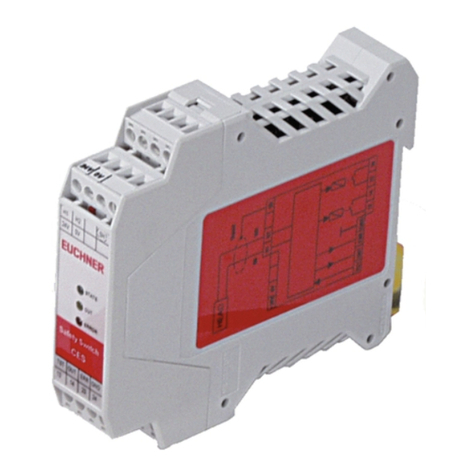
Operating Instructions Safety Systems
MGB-L..B-EI-… (Ethernet/IP) and With Data Structure Type A
2(translation of the original operating instructions) 2126330-10-03/21
Contents
1. About this document............................................................................................. 4
1.1. Scope............................................................................................................................................4
1.1.1. Notes on older product versions ......................................................................................4
1.2. Target group ..................................................................................................................................4
1.3. Key to symbols...............................................................................................................................4
1.4. Supplementary documents ..............................................................................................................4
2. Correct use .......................................................................................................... 5
3. Description of the safety function .......................................................................... 7
4. Exclusion of liability and warranty ......................................................................... 9
5. General safety precautions ................................................................................... 9
6. Function............................................................................................................. 10
6.1. Interlocking module MGB-L0.B-EI....................................................................................................10
6.2. Locking module MGB-L1.B-EI. and MGB-L2.B-EI. ..............................................................................10
6.3. Guard locking for version MGB-L1 ..................................................................................................11
6.4. Guard locking for version MGB-L2 ..................................................................................................11
7. System overview................................................................................................. 12
7.1. Bus module MGB-B-…-EI................................................................................................................12
7.2. Locking/release module MGB-L.-....................................................................................................13
7.3. Handle module MGB-H-…...............................................................................................................13
7.4. Escape release MGB-E-... (optional) ................................................................................................13
7.5. Dimension drawing .......................................................................................................................13
8. Manual release................................................................................................... 14
8.1. Auxiliary release............................................................................................................................14
8.2. Lockout mechanism......................................................................................................................15
8.3. Escape release (optional) ..............................................................................................................15
8.3.1. Preparing escape release ..............................................................................................16
9. Mounting............................................................................................................ 17
9.1. Mounting lens...............................................................................................................................18
10. Changing actuating direction .............................................................................. 19
11. Protection against environmental effects............................................................. 20
12. Controls and indicators....................................................................................... 21




























